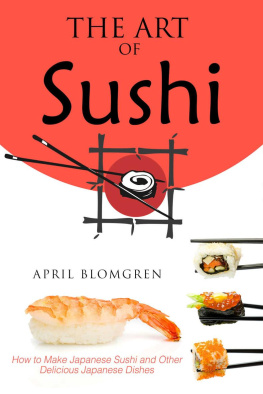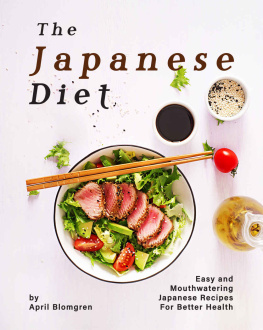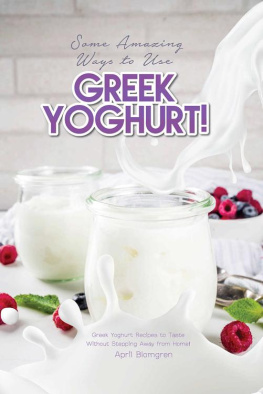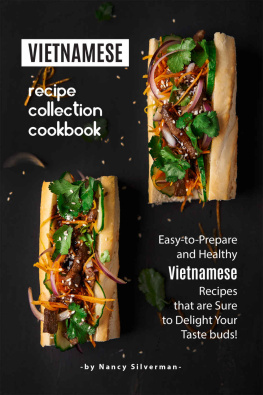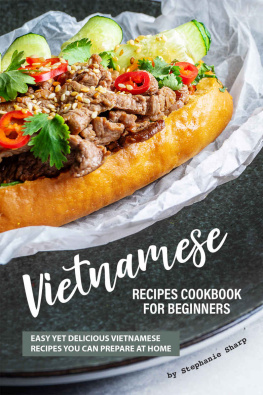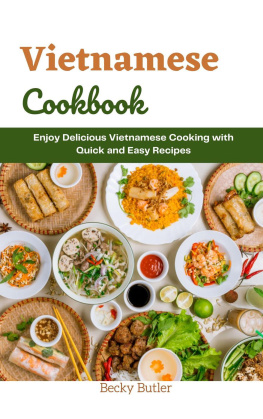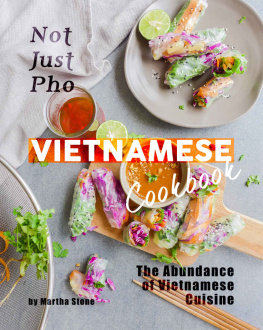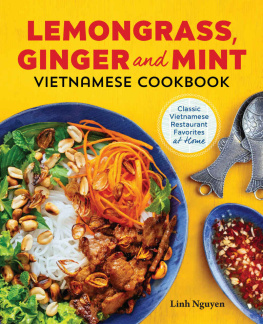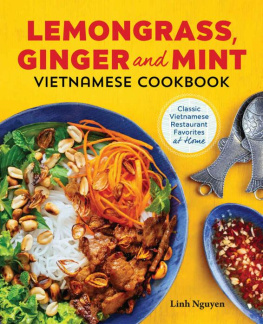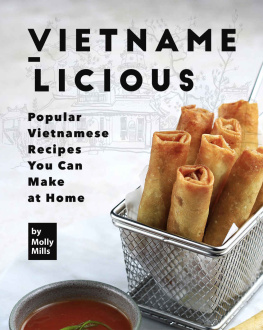Thank you so much for purchasing my book! As a reward for your purchase, you can now receive free books sent to you every week. All you have to do is just subscribe to the list by entering your email address in the box below and I will send you a notification every time I have a free promotion running. The books will absolutely be free with no work at all from you! Who doesnt want free books? No one! There are free and discounted books every day , and an email is sent to you 1-2 days beforehand to remind you so you dont miss out. Its that easy! Enter your email now to get started!
Introduction

With Vietnam's long history, it's no surprise that its food is a fusion of the world's greatest culinary traditions, French, Chinese, and a dash of Japanese. Consequently, Vietnamese cooking lends itself to adaptation. It is very traditional and gives a lot of importance to healthy food. They enjoy their savory and sweet dishes alike and try to prepare with the simplest of cooking methods and most natural ingredients, thereby ensuring a balanced diet for all ages.
In Vietnam, religion, seasons, cultures, and festivals have a heavy influence on the dishes that are prepared. Their breakfast is mostly the heaviest as it keeps them going and healthy for most of the day. It would include soups and stews made from beans, rice, noodles, pork, duck, and vegetables. Lunch and snacks are lighter as people are often at work and mostly fill up with street food like rolls and sandwiches. Last is dinner, is a delectable mix of hot steaming rice, some vegetables, beans, meat or poultry or seafood of any kind, sauces, and salads and is more of a family meeting hub over nutritious warm food.
The use of herbs is another unique identity of Vietnamese cuisine. Common herbs used are basil, coriander, and mint. Health is a major priority in Vietnamese cuisine, with special emphasis placed on vegetarian recipes. This is so because the majority of the Buddhist people in Vietnam are loyal to their doctrines.
Each element of Vietnamese cuisine is symbolic to nature and is known as the five fundamental taste senses mainly, which are:
1) Spice symbolizing to metal
2) Sour symbolizing to wood
3) Bitter symbolizing the element fire
4) Salty symbolizing water, and
5) Sweet symbolizing earth
These tastes have their unique smell, color, and nutrients, each enriched with carbohydrates, fats, minerals, proteins, and water. All in all, they contribute to making Vietnam cuisine healthy, refreshing, and well-flavored food.
This cookbook will provide you with several dishes ranging from breakfast to desserts, each delectable in its taste. Through preparing Vietnamese cooking, you will soon discover that these recipes offer tasty uses for spices and fresh herbs quite often. May you enjoy many years of preparing this collection of Vietnamese dishes with family and friends!
Happy Cooking!
Chapter 1: Vietnamese Cooking 101
Vietnamese Food Philosophies
The traditional Vietnamese approach is that ingredients must complement each other to create a balance between yin (cold) and yang (hot). The result of that harmony is a healthy and delicious dish. The ideal Vietnamese food balances the five flavors of
- Sweet
- Sour
- Spicy
- Bitter
- salty
Scientifically, seafood is very rich in protein, which might be difficult to digest, so ginger is needed to aid digestion. Plus, according to Vietnamese folklore, ginger also helps those with mild seafood allergies tolerate it better. Vietnamese harmony also applies to flavors and nutritional content. It is reflected in the different ingredients in a dish and the different dishes in a meal. For example, a meal should balance carbohydrates, water, fiber, protein, and fat. In terms of flavors, a meal is usually a combination of sweet, sour, spicy, and salty. A simple dipping sauce is also a harmony of fish sauce, sugar, lime juice or vinegar, chilies, and garlica delightful combination that can make plain steamed vegetables a lot more flavorful.
Vietnamese Pantry
The following are the key Ingredients to Cook Vietnamese Cuisine:
Amaranth
Amaranth may be found in salads or savory dishes. It is mostly used in braised dishes. The color may be extracted by soaking the seeds in water or oil. It is rich in carotenoids and antioxidants.
Anchovy sauce
A sauce made from fermented and salted anchovies with an overpowering taste and smell. It is diluted when used as a condiment.
Bitter melon
It is a very bitter-tasting cousin of the cucumber, usually used in soups. It is said to ease stomach problems and boost immunity, and to help maintain the proper level of sugar in the blood.
Caramel sauce
A syrup made from caramelized, slightly scorched sugar. It ranks second to fish sauce and in line with soy sauce in Vietnamese cooking. It lends a sweetish, smoky note to braised and grilled dishes.
Chicken stock
Vietnamese chicken stock is very light and is made simply from chicken and water.
Chili sauce
A condiment made from chilies, salt, garlic, and vinegar.
Cilantro
Cilantro is a common garnish for all kinds of dishes soups, spring rolls, salads, and more. It's also known as coriander.
Coconut milk
It is made from squeezed, grated coconut with a little water; it is usually used in desserts.
Dill
Its used in fish dishes and more as a vegetable than an herb.
Fish sauce
Fish sauce is the one ingredient that unifies all Vietnamese recipes. This is made from raw fish fermented in salt. It has a pungent and overpowering odor and is the main source of the salty flavor in many Vietnamese dishes.
Five-spice powder
Its a Chinese spice mix common in Vietnamese cuisine used for stews, and vegetable or poultry dishes. It is a combination of Szechuan peppercorns, cloves, cinnamon, star anise, and fennel.
Galangal
A rhizome similar to ginger and used in many dishes, also called Thai ginger. It has a peppery flavor.
Garlic chives
This herb's flavor is a combination of onion and garlic. Used in rice paper rolls, soups, or stir-fries. It is good for digestion and blood circulation.
Ginger
The Vietnamese like ginger, and it is present in many recipes. It is said to ease flatulence and arthritic pain.
Basil
Basil is often used in salads and as part of a mixed herb plate. You can substitute the more familiar Italian basil.


